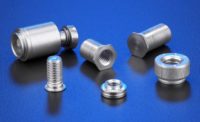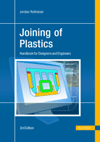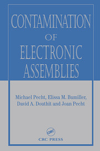Stainless steels – naturally corrosion-resistant metal alloys – are auto-passivating, which means they spontaneously produce a passivation layer (a thin passive film) in oxidizing environments like air or moisture. The passivation layer is non-reactive: it inhibits the electrochemical reactions that would normally take place between the base material and the environment.
Although the passivation layer can be damaged, exposing the material beneath, it will naturally repair itself as long as the base stainless steel material is free of contaminant. Alternatively, an electrochemically-applied coating such as zinc plating is simply a sacrificial layer that will eventually deplete and give way to the material beneath.
Kinks in the Stainless Steel Armor
It is instinctive to think that stainless steels should never corrode, given their auto-passivating quality, yet they are not completely impervious to rust. Crevice corrosion, ferritic contamination at the surface, and passivation issues are causes of corrosion in stainless steel.
- Crevice corrosion. A tight corner in a component’s geometry or a rough surface of a component can cause it to retain moisture and inhibit oxygen from reaching the material’s surface. Without a constant supply of oxygen to auto-replenish, the passivation layer is weakened. Resolving this issue requires a redesign of the geometry of the part, perhaps eliminating sharp corners where corrosion is observed by adding/increasing radii, or improving the surface finish of the part.
- Ferritic contamination at the surface. This form of corrosion (commonly known as “pitting corrosion”) occurs when residual iron is left on tools, containers, and other equipment used by a manufacturer to process carbon steel parts. This residual iron – known as “free iron” – can become embedded in the surface of stainless parts on contact. Free iron inhibits the formation of the passivation layer, leaving the base stainless steel material exposed to the environment.
- Passivation issues. To ensure a stainless part continues to resist corrosion after manufacturing, the part must be passivated in post-processing. Passivation, a cleaning operation, removes contaminant on or just below the surface of stainless steel parts. Once the contaminant is removed, the passivation layer again has a chance to reform and make the component inert to corrosive reactions.
Ensuring Properly Passivated Stainless Parts
ASTM A967 and ASTM A380 – two of the most widely recognized industry standards for passivation – list a number of methods that can be used to passivate a part; however, they do not claim to be all-encompassing. ASTM recognizes that there are many valid ways to passivate a stainless steel part. Rather than constrain the passivation process, these standards focus on the methods of testing to verify that passivation was successful.
ASTM A967 and ASTM A380 cover six different passivation testing methods, each with its own set of advantages and disadvantages. The most frequently used include:
- Copper sulfate test.
- High humidity test.
- Salt spray test.
Copper Sulfate Testing
Copper sulfate testing is possibly the most common of the three tests because it is quick and very economical. The sole material required is a copper sulfate solution, which is continuously swabbed over the surface of the part for at least 6 minutes.
However, this test is not suitable for the detection of ferritic contaminate in 400 series stainless steels because the composition of 400 series stainless will lead to false positives. In such cases, it is more appropriate to conduct a high humidity test.
High Humidity Testing
High humidity testing involves placing parts in a sealed chamber, the atmosphere of which reaches and a temperature of 100˚F and humidity levels near 97%. Test specimens are left in the chamber for a full 24 hours. Parts that pass this test exhibit no signs of rust or staining at the surface. This test is universal to all types of stainless but necessitates purchasing, calibrating and maintaining a humidity chamber, which can be expensive.
Salt Spray Testing
Like humidity testing, salt spray testing places parts in a controlled environment for a period of time. However, the salt spray chamber pumps a 5% salt fog solution into its atmosphere for the duration of the test, which rapidly accelerates corrosion.
Proper controls and test piece setup make salt spray testing highly reproducible. This consistency causes many manufacturers to use it for testing zinc electroplate and other coatings. Having already invested in salt spray equipment for their other finishing processes, this becomes a less expensive alternative for passivation testing as well.
It is essential to understand that the performance of a part in salt spray does not indicate how it will perform when exposed to the open air. There is no direct correlation between performance in salt spray and performance in a real world environment.
The salt spray test is only intended to provide a standard to reference for anyone inspecting the quality and consistency of a coating or finish.
- The salt spray environment is much more aggressive and concentrated than even a marine setting (the salt concentration of the ocean is roughly 3%).
- Salt spray tests for many common platings and coatings can last multiple days – with some tests lasting 500 hours or more before the parts begin to rust – while stainless steel parts can begin to exhibit signs of rust in as little as a few hours of exposure. Per ASTM A967 and A380, stainless parts are shown to be properly passivated if they resist corrosion in salt spray for just 2 hours.
- Stainless steel performs relatively poorly in salt spray because the constant exposure to a harsh environment rapidly erodes the passivation layer and prevents it from reforming. With the passivation layer inhibited, the base material is exposed and the part quickly begins to corrode.
For the material to perform effectively and resist corrosion, it is critical that the parts be passivated and tested properly.
As a naturally-corrosion resistant metal alloy, stainless steel is the material of choice where extended part life is required. The material’s ability to self-passivate gives it longevity that is unmatched by sacrificial coatings in real-world settings. However, one must use caution with stainless steel, and must understand that it is not impervious to rust. Properly passivating stainless steel parts, and testing them appropriately, is vital to ensuring that they meet your expectations.
Further Reading
- The salt spray test and its use in ranking stainless steels, International Stainless Steel Forum (ISSF), 2008
- In the Spotlight: Salt Spray Test – Suitable for Stainless Steels?, Bodycote S3P (2016)
- Corrosion mechanisms in stainless steel, BSSA
- How to Passivate Stainless Steel Parts, Carpenter Technology Corporation
- ASTM A967 – Standard Specification for Chemical Passivation Treatments for Stainless Steel Parts, ASTM International
- ASTM B117 – Practice for Operating Salt Spray (Fog) Apparatus, ASTM International






